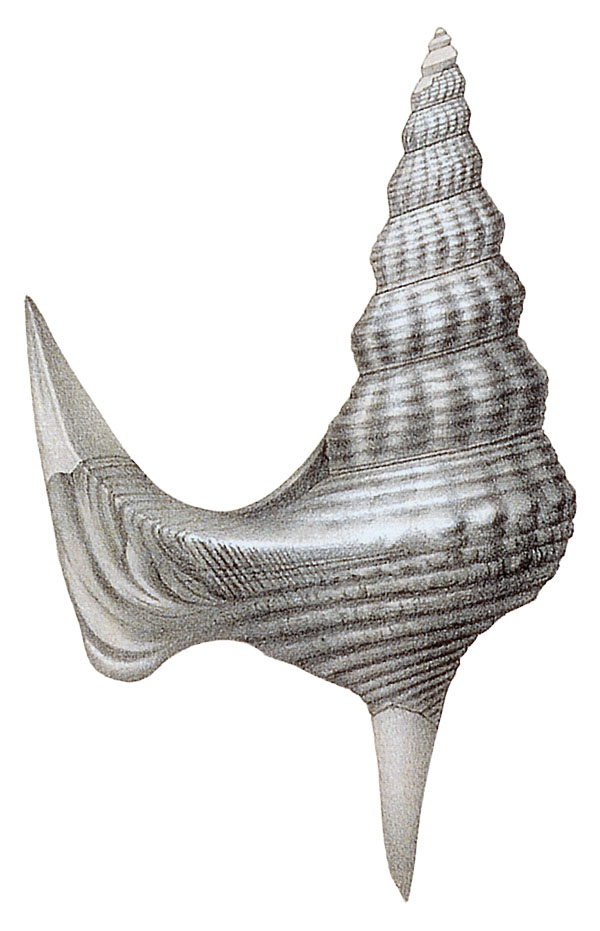Stromboidea
Original Description of Anchura haydeni by White, 1879, p. 311:
- "Shell large; body, exclusive of the wing and including the beak, subfusiform; spire elongate, about equal in length to the body volution and the beak together; volutions ten or twelve, moderately convex; those of the spire marked by longitudinal nodes, which disappear before reaching the suture at either side of the volution, but they approach more nearly to that of the proximal side; suture linear or faintly impressed; surface of the volutions of the spire marked by from five to seven strong revolving raised lines, which are of about equal strength upon and between the longitudinal nodes; numerous minute revolving raised lines also cover the surface between the stronger ones just mentioned, and these are crossed by numerous fine, sharply raised lines of growth, giving the well-preserved surface of the shell a finely cancellated appearance under the lens. Upon the body-volution, the longitudinal nodes gradually disappear and are replaced by a median row of smaller nodes, continuous with the former, and also with the strong plain carina which extends out upon the wing to its posterior extremity, and lies near to and nearly paralle with the posterior border of the wing. The stronger revolving lines of the spire become still stronger with the increase in size of the volutions, but they disappear upon reaching the wing. Four or five of those immediately in front of the median convexity of the body-volutions are especially strong, and become sharply raised ridges with channels of about equal width between them; in front of these is a series of smaller ones, the representatives of which are covered by the successive turns of the spire, and which terminate upon and at the base of the beak. Beak long, slender, straight, pointed. Wing large, projecting much beyond the aperture, constricted in the middle of its transverse portion, but expanding again beyond; the posterior part much extended and terminating in a long, somewhat strong, pointed process, which is angular along its back; the anterior portion of the outer part of the wingis prominent, projecting forward and abruptly rounded; posterior border deeply concave; exterior border nearly or quite straight; anterior border having a general concavity, but a sinuous outline. Outer surface of the wing more or less strongly wrinkled in the direction of the lines of growth. The direction of these wrinkles and of the lines of growth indicates that before the wing was fully formed the antero-exterior portion of the wing was less prominent than when adult. Inner lip apparently without a callus."
Dimensions: Length, from the point of the beak to the apex of the spire, upward of 10 centimeters; length of beak, 2 1/2 centimeters; breadth of body-volution, including the wing, 6 1/2 centimeters; diameter of body-volution, exclusive of the wing, 28 millimeters.
Stratum typicum: Pierre Shale Group, Campanian, upper Cretaceous
Locus typicus: 15 miles west of Greeley, Weld County, and about 6 miles south of Fort Collins, Colorado, USA
Anchura haydeni White, 1879, pl. 7, fig. 1
Ethymology: given after Dr. F.V. Hayden, director of the US Geology Survey.
History and Synonymy
1923
Spengler defines Aporrhais (Helicaulax) haydeni rogosissima Spengler 1923
References
- Sohl, 1967
- Spengler, E., 1923; Contributions to the palaeontology of Assam. Memoirs of the Geological Survey of India. Palaeontologia indica, 1923.– N. S., vol. 8, mem. ¹1.– 80 pp., 4 pls.
- White, 1879

